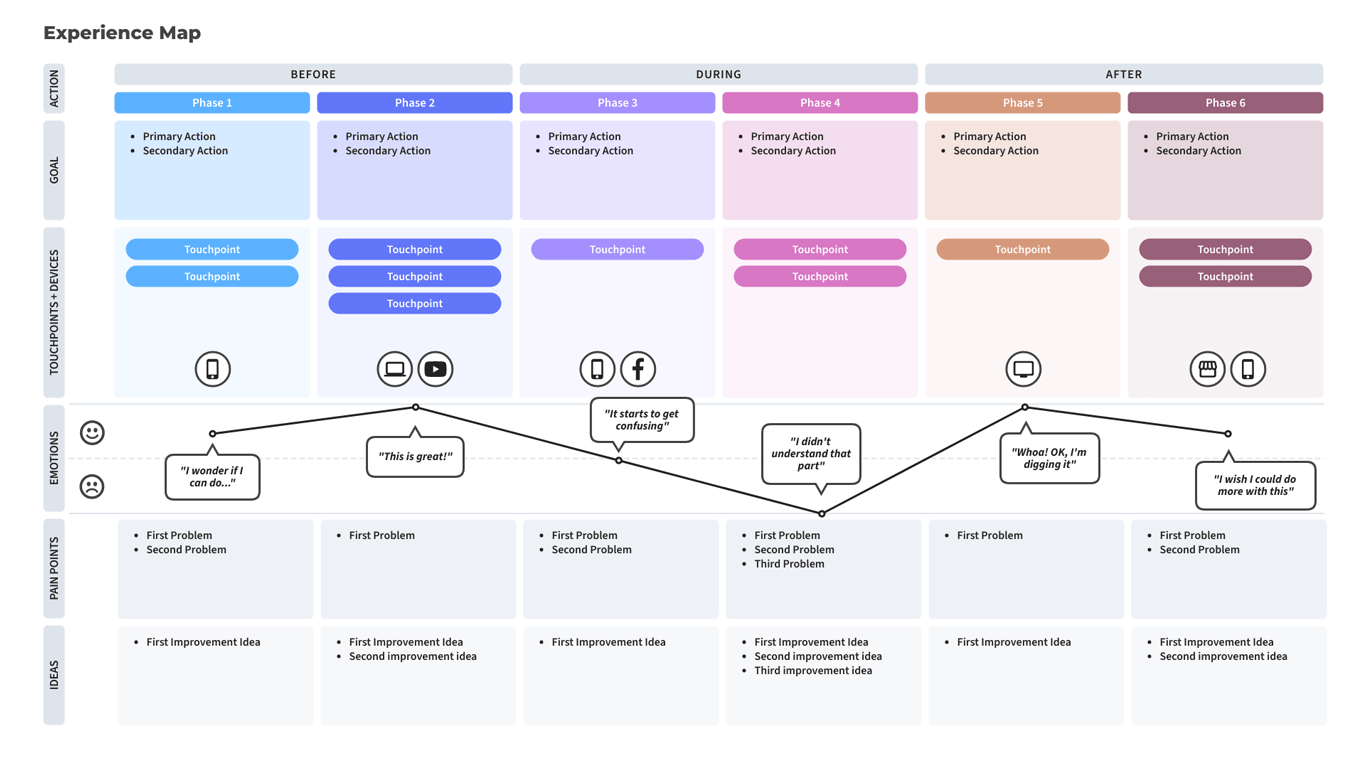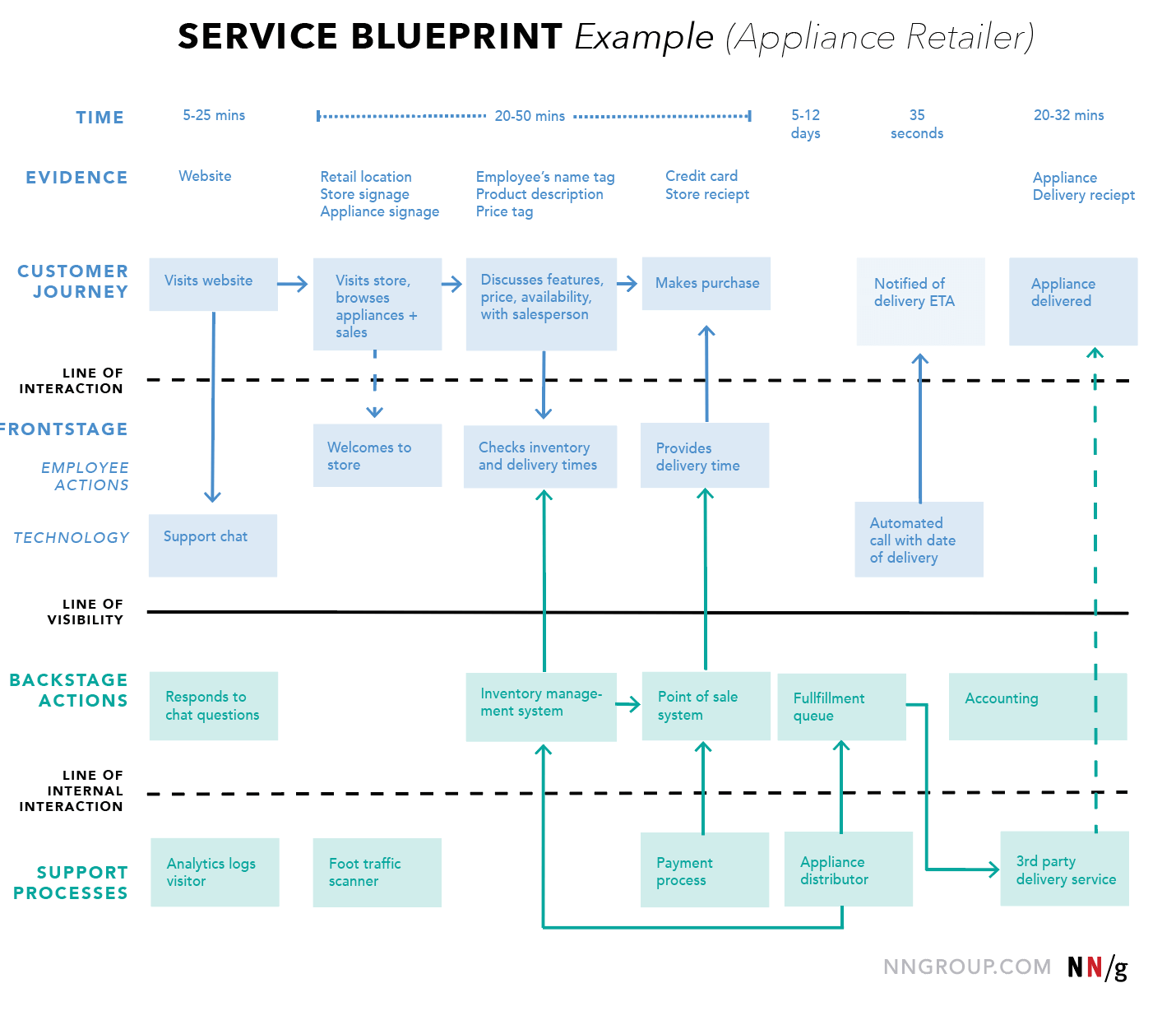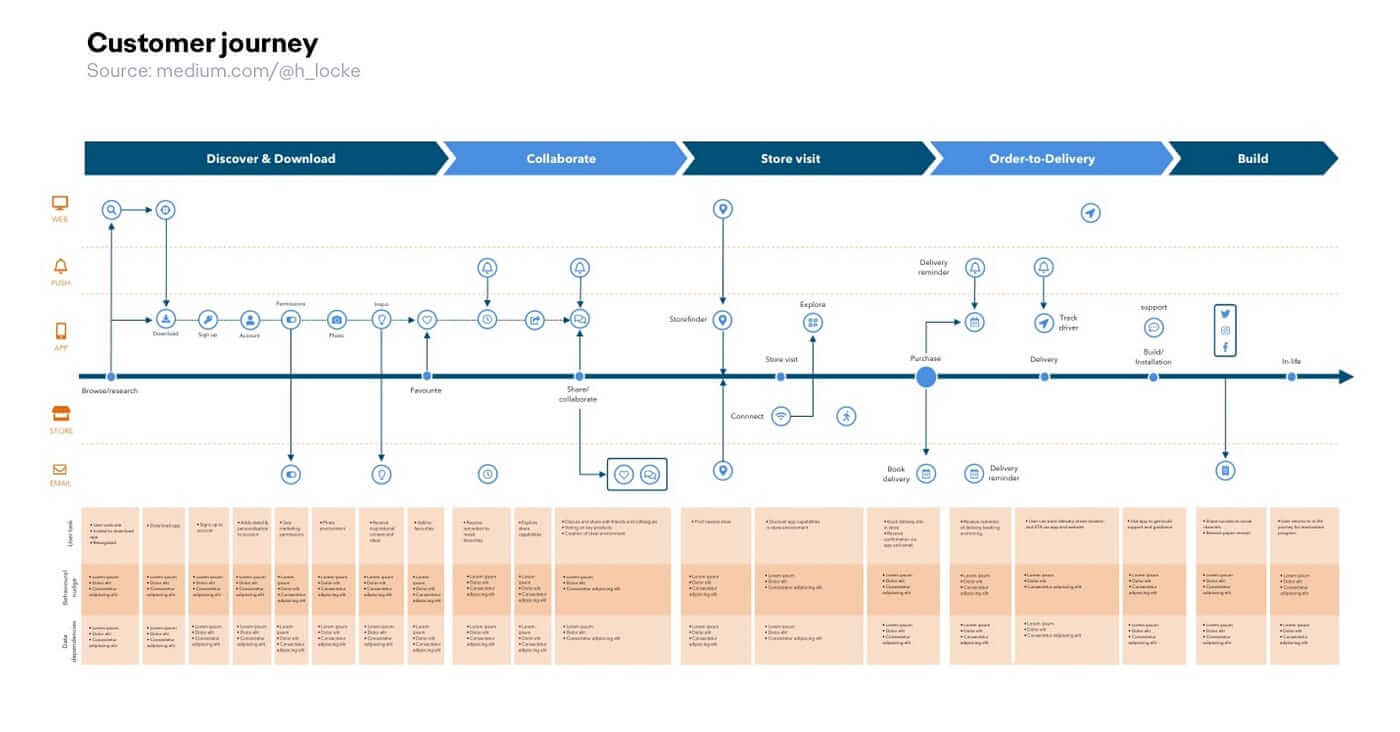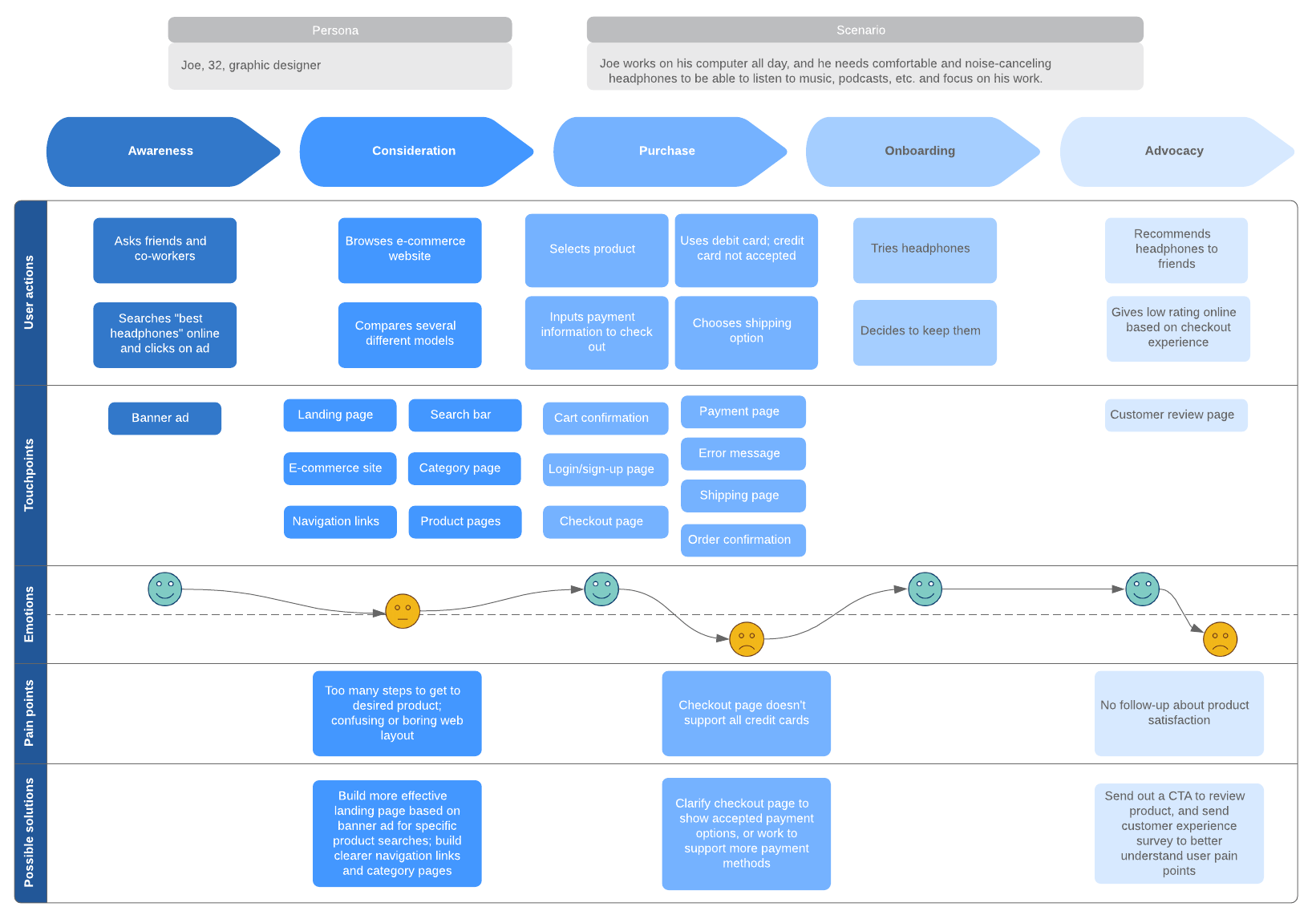A Deep Dive into the Whys and Hows of Customer Experience Mapping For Countertop Companies
The #1 tip for creating a customer experience map for a countertop company is to engage with your customers by gathering direct feedback through surveys, interviews, and reviews to accurately understand their experiences and needs. In today's competitive market, businesses must go beyond offering excellent products and services; they also need to provide an exceptional customer experience to foster loyalty and ensure long-term success. Understanding the various touchpoints customers interact with as they engage with a brand can be challenging, but customer experience mapping offers a strategic way to visualize this journey. This process provides valuable insights into customer behaviour, helps identify pain points, and enables businesses to make data-driven decisions to improve satisfaction and retention.
Click on each corresponding link to jump ahead:
- Why Customer Experience Mapping Is It Important?
- Why Customer Experience Mapping Is It Important For Countertop Companies?
- What Is Customer Experience Mapping?
- Components of a Customer Experience Map
- Creating a Customer Experience Map
- Why Customer Experience Mapping Is a Continuous Process
- The Difference Between Customer Experience Mapping and Customer Journey Mapping
- What Are All the Benefits of Customer Experience Mapping
- What Are the 7 Steps to Map the Customer Journey
- Customer Journey Map Examples
If you are looking to work with a company that specializes in marketing for countertop companies, contact Profitworks.
1) Why Customer Experience Mapping Is It Important?
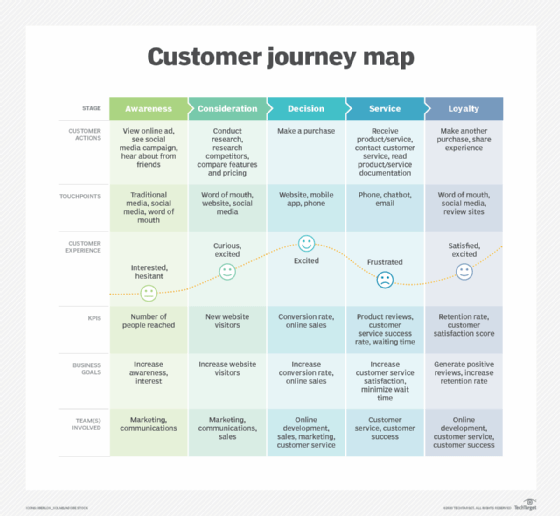
Source: Tech Target
One of the key reasons customer experience mapping is crucial is that it allows companies to align their business objectives with customer needs. Many companies assume they know what their customers want, but customer journeys are often more nuanced and complex. Mapping the experience uncovers critical insights into how customers engage with your brand and where potential friction points may exist. Tools such as Customer Journey Analytics provide deep, data-driven insights that further enrich this understanding, helping businesses pinpoint moments of friction and understand what drives customer decisions. Incorporating customer experience mapping into business strategy helps optimize touchpoints and communication channels, leading to greater customer satisfaction and loyalty. The ability to see the journey from the customer’s perspective is essential for crafting more personalized, seamless experiences that resonate with your audience.
2) Why Customer Experience Mapping Is It Important For Countertop Companies?
Customer experience mapping is crucial for countertop companies because it provides a comprehensive understanding of the entire customer journey, from initial awareness to post-purchase support. In a competitive market, delivering exceptional customer experiences is key to differentiating your brand and building lasting relationships. By identifying and analyzing every touchpoint, businesses can uncover pain points and areas for improvement, ultimately enhancing customer satisfaction and loyalty.
Effective customer experience mapping allows countertop companies to tailor their services to meet customer needs, leading to increased engagement and repeat business. It also fosters a customer-centric culture within the organization, ensuring that all team members—from sales to installation—understand the importance of delivering a seamless experience. Furthermore, mapping facilitates better resource allocation, enabling companies to focus on high-impact areas that drive sales and enhance service quality.
3) What Is Customer Experience Mapping?
Customer experience mapping is the process of capturing the entire journey a customer takes when interacting with your brand. This map includes every stage, from initial awareness to post-purchase experiences, helping businesses see how customers feel and behave along the way. It brings the customer’s perspective into sharp focus, giving companies a clearer understanding of where their product or service excels and where improvements are needed.
4) Components of a Customer Experience Map
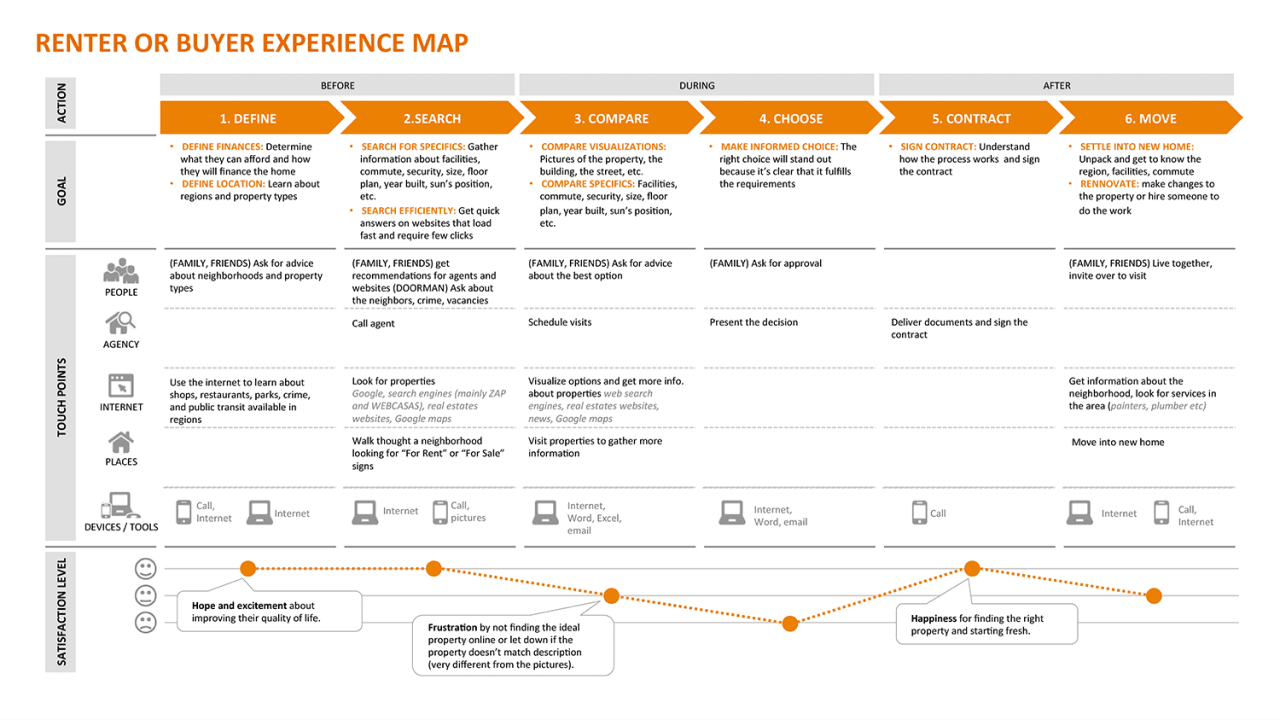
Source: Eleken
A successful customer experience map provides a detailed view of how customers engage with your business. At the core, it defines key customer personas—fictional representations of your target audience based on data and market research. Each persona represents a segment of your customer base, allowing you to capture their motivations, goals, and potential challenges. This is essential for understanding the diverse ways different groups interact with your brand.
Throughout their journey, customers engage with your business at multiple touchpoints. These could include anything from visiting your website to interacting with customer support or responding to social media campaigns. Each touchpoint offers an opportunity to either enhance the customer experience or introduce challenges. The emotional journey customers go through is equally important. Different stages of the experience evoke different emotions. From excitement during the product discovery phase to frustration if something goes wrong during checkout, understanding these emotional highs and lows helps fine-tune the overall experience.
Identifying pain points is a crucial aspect of customer experience mapping. Whether it’s a cumbersome website, long wait times for support, or unclear product information, pinpointing areas where customers struggle helps businesses implement solutions to alleviate these problems. It’s not just about recognizing issues; it’s about creating opportunities to improve. Once pain points are identified, solutions that enhance the journey—such as clearer navigation or faster customer service response times—can be implemented to create a smoother experience.
5) Creating a Customer Experience Map
Building a customer experience map begins by understanding your objectives. Businesses must clearly define what they are hoping to achieve with the map, whether it's improving the onboarding process, reducing cart abandonment, or enhancing post-purchase engagement. Having a specific goal in mind provides focus and ensures that the map is tailored to meet those particular needs.
Data collection is another critical step. The insights gained from customer feedback, surveys, and website analytics form the foundation of the map. This ensures that the map is based on real customer experiences rather than assumptions.
Once the data is collected, the next step is to define your customer personas and map out their journey. Each persona will likely interact with your brand differently, so it’s important to capture the journey specific to each one. This includes outlining the various touchpoints, such as the first time a customer encounters your brand through an ad, how they interact with your website or app, and their experiences with customer service. The emotional journey is mapped alongside these touchpoints, showing how different interactions impact the customer’s mood, from satisfaction to frustration.
Pain points should be carefully examined in this process. For instance, if customers frequently abandon their carts during checkout, there may be an issue with the complexity of the process, or perhaps payment options are too limited. Identifying these pain points allows for the development of solutions aimed at improving those specific stages of the journey.
Solutions are only meaningful if they address the root of the problem. The map not only helps visualize where customers face challenges but also reveals opportunities for improvement. For example, simplifying the checkout process or adding more customer support options can dramatically improve customer satisfaction and reduce frustration.
6) Why Customer Experience Mapping Is a Continuous Process
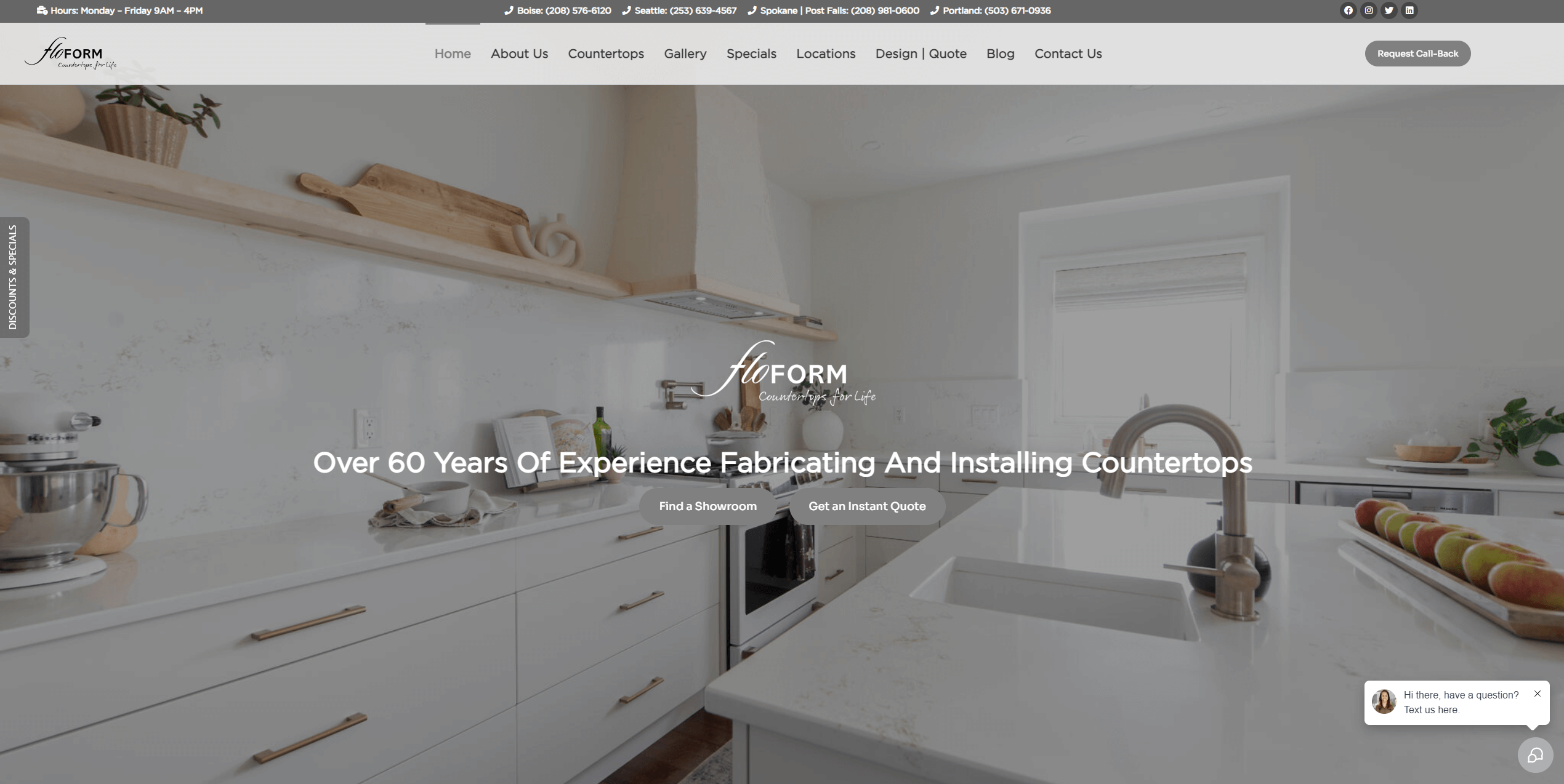
Source: Floform
Customer expectations are always evolving, which is why customer experience mapping should be an ongoing effort rather than a one-time project. As your business grows and adapts to market trends, the way customers interact with your brand will also change. Keeping your map up-to-date ensures that you’re constantly in tune with what your customers want and need.
Incorporating feedback loops into your customer experience map allows for real-time updates based on new data and insights. By continuously refining the customer journey, businesses can stay ahead of emerging trends and anticipate shifts in customer behavior, allowing for a more agile approach to CX strategy. When new technologies, products, or services are introduced, integrating these updates into the map ensures a seamless transition for customers, ultimately leading to a more cohesive and enjoyable experience.
Customer experience mapping isn't just a useful tool for resolving immediate issues; it’s an essential part of long-term business planning. By continuously optimizing the customer experience, companies can build stronger relationships with their customers, foster loyalty, and drive sustainable growth. This commitment to understanding and improving the customer journey is what separates successful, customer-centric brands from the rest.
Customer experience mapping is a powerful method for improving the way businesses connect with their customers. It offers a visual and emotional understanding of the customer’s journey, highlighting areas for growth and opportunities for deeper engagement. As customer expectations continue to evolve, a well-maintained and insightful experience map will be key to staying competitive and delivering the best possible experiences for your audience.
7) The Difference Between Customer Experience Mapping and Customer Journey Mapping
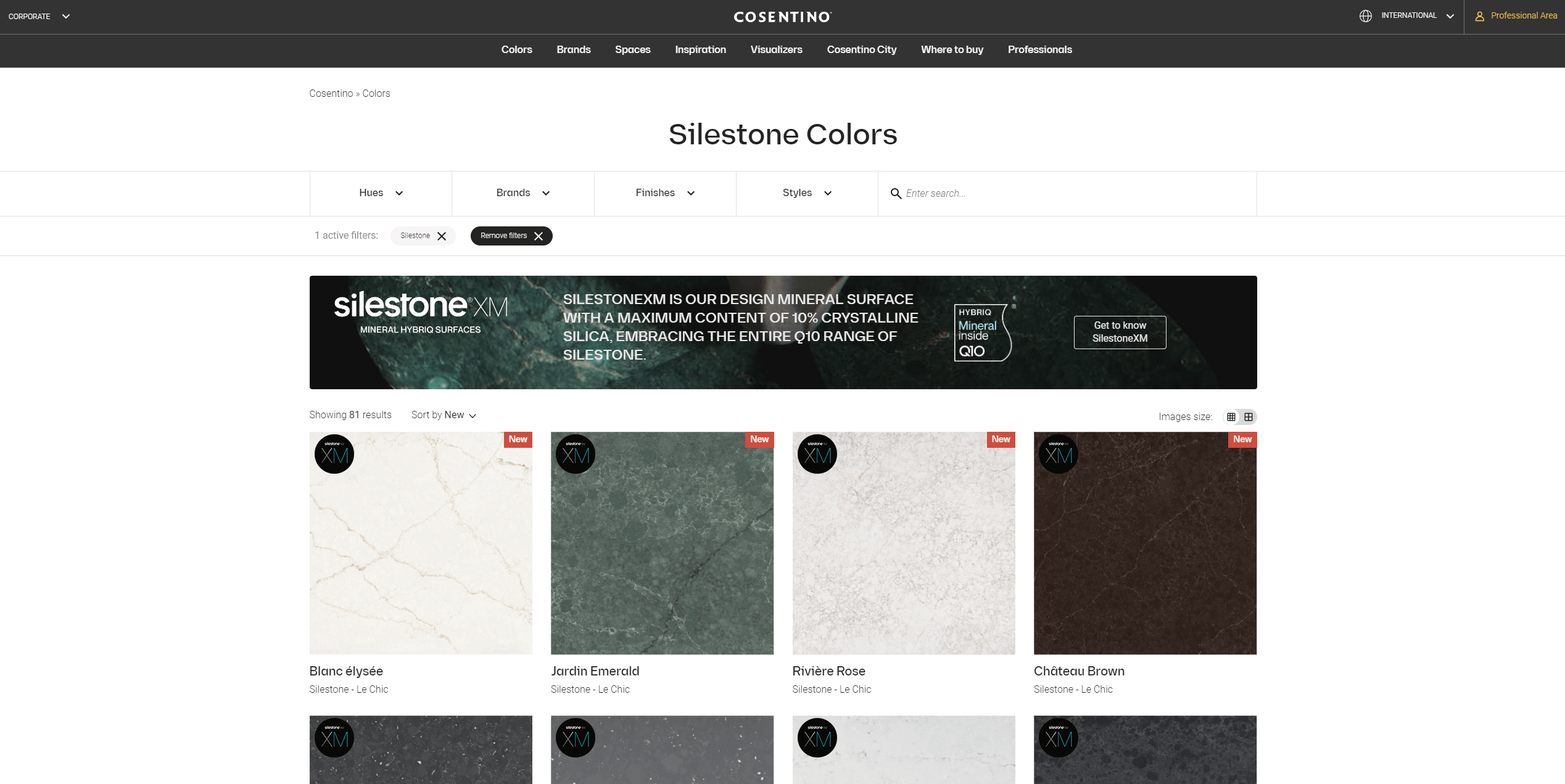
Source: Cosentino
Overview of Terms
Customer Experience Mapping (CXM) and Customer Journey Mapping (CJM) are two essential methodologies used to understand and improve customer interactions with a brand. Customer Experience Mapping (CXM) is a comprehensive approach that focuses on capturing the entire customer experience, encompassing every interaction and emotional response throughout the customer lifecycle. In contrast, Customer Journey Mapping (CJM) zeroes in on specific steps or touchpoints within the customer journey, detailing how customers navigate through their experience with a company.
Key Distinctions
The primary distinction between CXM and CJM lies in their scope and focus. CXM adopts a more holistic view, aiming to understand overall customer satisfaction and emotional connections with the brand. It emphasizes the entire relationship a customer has with the company, from pre-purchase research to post-purchase follow-up, considering factors that influence long-term loyalty. Conversely, CJM typically emphasizes specific interactions, mapping out each touchpoint along the way. This method is particularly useful for identifying individual customer experiences and optimizing those critical moments that can significantly impact satisfaction.
Why the Distinction Matters
Understanding the differences between CXM and CJM is vital for countertop companies looking to enhance their customer strategies. CXM supports long-term brand loyalty by fostering a deeper emotional connection and addressing customers' overall perceptions of the brand. This approach helps companies create consistent and positive experiences across all stages of the customer journey. On the other hand, CJM focuses on improving individual touchpoints, allowing companies to refine specific interactions, such as consultations, installations, and customer service. By recognizing the unique benefits of both methods, countertop businesses can create a more comprehensive strategy that enhances both immediate satisfaction and long-term loyalty.
Examples of Each in Action
To illustrate these distinctions, consider two scenarios within a countertop company:
-
Customer Experience Mapping (CXM) in Action: A countertop company conducts a CXM initiative that includes gathering feedback from customers across all touchpoints—online inquiries, showroom visits, consultations, installations, and after-sales support. By analyzing the overall emotional responses and satisfaction levels throughout the entire process, the company identifies that customers feel overwhelmed during the selection process. In response, they implement a personalized consultation service, enhancing the overall experience and fostering long-term loyalty.
-
Customer Journey Mapping (CJM) in Action: In a CJM exercise, the same countertop company focuses specifically on the installation phase of the customer journey. They map out each touchpoint, such as scheduling, technician arrival, and communication during the installation process. By gathering feedback at each step, they discover that customers appreciate real-time updates about the technician's arrival time. Armed with this insight, the company enhances communication by sending automated updates via text, resulting in improved customer satisfaction during that specific touchpoint.
8) What Are All the Benefits of Customer Experience Mapping
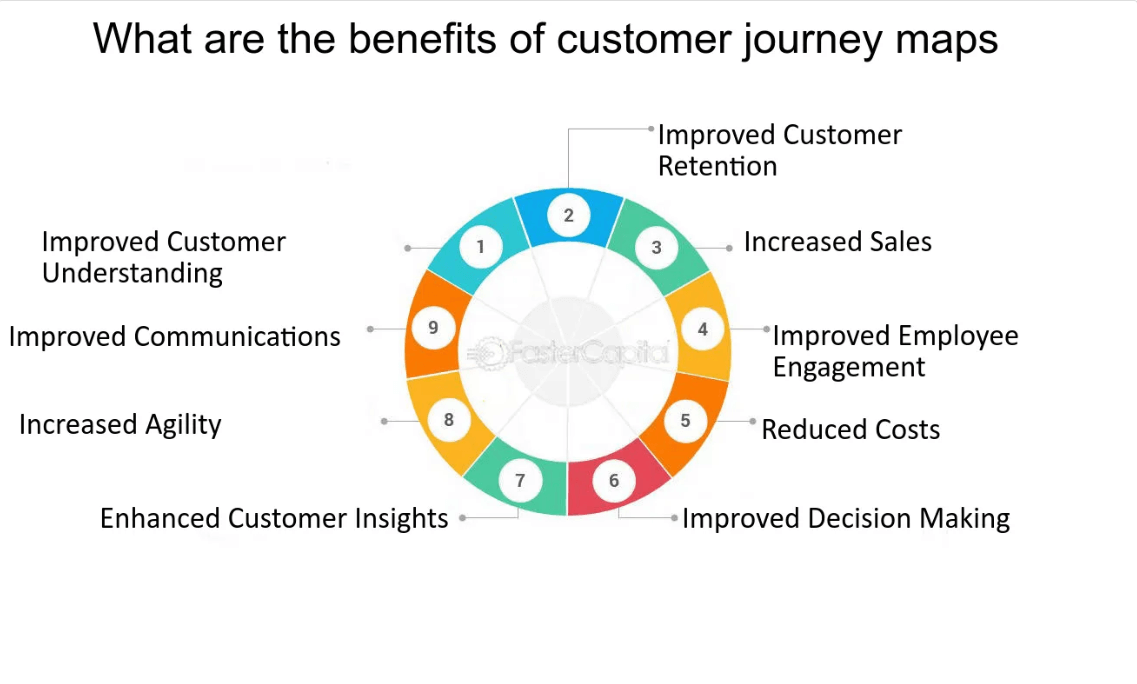
Source: Faster Capital
Enhanced Customer Satisfaction
Customer experience mapping is instrumental in uncovering pain points and opportunities to improve customer interactions. By analyzing feedback from various touchpoints, countertop companies can identify where customers feel frustrated or confused. For instance, if customers frequently mention delays during the consultation phase, the company can investigate and address the root cause. This proactive approach not only resolves issues but also enhances the overall satisfaction of customers, making them feel valued and understood.
Increased Sales and Loyalty
A positive customer experience significantly influences repeat business, referrals, and average spend. When customers have a seamless and enjoyable experience—whether during the selection process, installation, or post-purchase support—they are more likely to return for future purchases. Additionally, satisfied customers are inclined to recommend the company to friends and family, acting as brand ambassadors. Research indicates that businesses with high customer satisfaction scores experience increased customer loyalty and higher average transaction values, contributing to sustained growth.
Clear Insights into Customer Needs and Preferences
Mapping the customer experience reveals valuable insights into customer needs and preferences. By understanding the factors that drive satisfaction and dissatisfaction, countertop companies can make informed decisions about inventory choices and promotional efforts. For instance, if mapping shows a strong preference for eco-friendly materials, the company can adjust its product offerings and marketing strategies accordingly. This data-driven approach ensures that businesses remain aligned with customer expectations, leading to better engagement and sales.
Operational Efficiencies
Understanding the customer journey enables countertop companies to streamline their processes, such as installation and aftercare. By mapping out each stage of the journey, businesses can identify bottlenecks or inefficiencies that may hinder the customer experience. For example, if customers frequently report miscommunication regarding installation schedules, the company can implement more effective scheduling software or communication protocols. Streamlining these processes not only enhances the customer experience but also improves operational efficiency, reducing costs and increasing profitability.
Improved Brand Perception
A seamless customer experience enhances a company's reputation in a competitive industry. When customers consistently receive high-quality service and feel supported throughout their journey, they are more likely to share their positive experiences through reviews and word-of-mouth. This positive brand perception can distinguish a countertop company from its competitors, attracting new customers and fostering trust. In a market where consumers have numerous options, a strong reputation built on exceptional customer experiences is a crucial competitive advantage.
Better Targeted Marketing
Customer experience mapping allows for personalized and timely marketing, increasing return on investment (ROI). By understanding the different stages of the customer journey, companies can tailor their marketing messages to resonate with specific customer needs and preferences. For example, a countertop company might send targeted promotions for maintenance products to customers who have recently completed an installation. This personalized approach not only improves engagement but also increases the likelihood of conversion, making marketing efforts more effective and efficient.
9) What Are the 7 Steps to Map the Customer Journey

Source: UX Magazine
Mapping the customer journey is a strategic process that helps countertop companies understand and enhance their customers' experiences. Here are the seven essential steps to effectively map the customer journey:
1. Define Customer Personas
Begin by outlining the profiles of your typical customers. These personas should represent different segments of your clientele, such as new homeowners, renovators, or interior designers. By understanding the demographics, preferences, and motivations of each persona, you can tailor the customer journey to meet their specific needs and expectations.
2. Set Clear Objectives for the Map
Determine what you aim to achieve with your customer journey map. Whether it’s improving lead conversion rates, increasing customer satisfaction during the installation process, or enhancing post-purchase support, having clear objectives will guide your mapping efforts and help you measure success.
3. List All Customer Touchpoints
Identify and map every interaction your customers have with your company throughout their journey. This includes initial web inquiries, showroom visits, consultations, purchase decisions, installation processes, and post-installation follow-ups. A comprehensive list of touchpoints will provide a clearer picture of the overall customer experience.
4. Identify Customer Needs and Pain Points
Conduct research or surveys to gather insights into what customers want and where they experience challenges. Understanding their needs and pain points—such as confusion during product selection or delays in installation—will help you pinpoint areas for improvement in the customer journey.
5. Map Out Emotional Responses at Each Touchpoint
As you map the journey, include the emotional highs and lows that customers experience at each touchpoint. For instance, customers may feel excitement during the selection process but frustration if there are delays in installation. Recognizing these emotional responses allows you to address pain points and enhance positive experiences.
6. Identify Opportunities for Improvement
With a complete view of the customer journey and their emotional responses, identify potential areas for enhancing the experience at each stage. This may involve streamlining processes, improving communication, or offering additional resources, such as design consultations or maintenance tips, to support customers throughout their journey.
7. Test and Refine the Map Regularly
Customer preferences and market conditions can change over time, so it’s essential to schedule routine reviews and updates of your customer journey map. Regularly collecting feedback from customers and analyzing their experiences will keep the map accurate and aligned with their needs, ensuring continuous improvement in your customer experience strategy.
By following these seven steps, countertop companies can create a detailed and actionable customer journey map that enhances customer satisfaction, drives loyalty, and ultimately contributes to business success.
10) Customer Journey Map Examples
Visualizing customer journey maps can significantly aid countertop companies in understanding their customers' experiences and enhancing interactions at various stages. Here are five examples of customer journey maps that illustrate different aspects of the customer experience:
